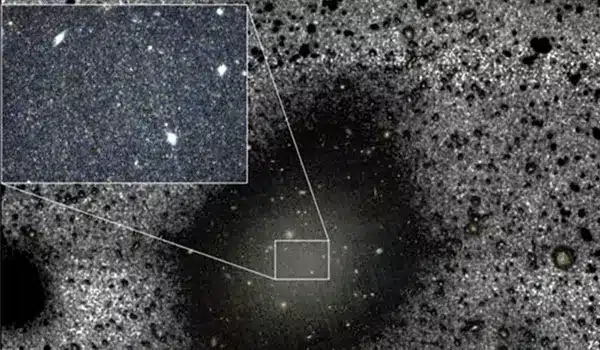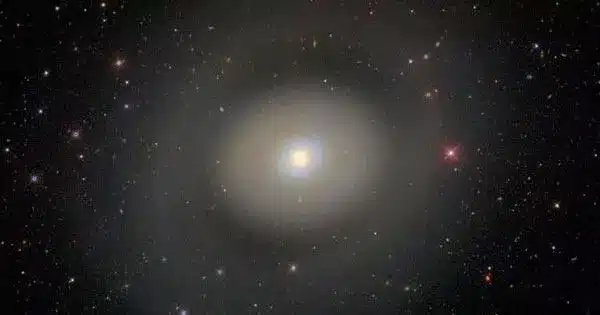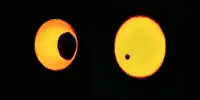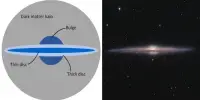Dark matter is an intangible, enigmatic substance that, unlike regular matter (stars, gas, and dust), does not emit, absorb, or reflect electromagnetic radiation. It is largely detectable via its gravitational influence on visible stuff and the universe’s large-scale structure.
Sebastién Comerón, a researcher at the IAC and the University of La Laguna (ULL), headed a team of scientists who discovered that the galaxy NGC 1277 does not contain dark matter. This is the first time that a big galaxy (several times the mass of the Milky Way) has been found to be devoid of this invisible component of the universe. “This result contradicts currently accepted cosmological models, which include dark matter,” Comerón explains.
Massive galaxies, according to current standard model cosmology, contain significant amounts of dark matter, a type of matter that does not interact in the same way as normal matter; the only evidence for its existence is the strong gravitational pull it exerts on nearby stars and gas, and this interaction is observable.
NGC 1277 is a “relic galaxy” prototype, which implies it has had no interactions with its neighbors. This sort of galaxy is extremely rare, and it is thought to be the remains of enormous galaxies that formed in the early days of the universe.
The importance of relic galaxies in helping us to understand how the first galaxies formed was the reason we decided to observe NGC 1277 with an integral field spectrograph. From the spectra we made kinematic maps which enabled us to work out the distribution of mass within the galaxy out to a radius of some 20,000 light years.
Sebastién Comerón
“The importance of relic galaxies in helping us to understand how the first galaxies formed was the reason we decided to observe NGC 1277 with an integral field spectrograph” explains Comerón. “From the spectra we made kinematic maps which enabled us to work out the distribution of mass within the galaxy out to a radius of some 20,000 light-years” he adds.
The scientists discovered that the mass distribution in NGC 1277 was simply the distribution of stars, and from this, they deduced that there cannot be more than 5% dark matter within the radius observed, even if the measurements are consistent with the complete lack of this component.
Current cosmological models suggest that a galaxy the size of NGC 1277 should have at least 10% of its mass in the form of dark matter, with a maximum of 70%. “This discrepancy between the observations and what we would expect is a puzzle, and perhaps even a challenge for the standard model,” says Ignacio Trujillo, an IAC and ULL researcher who participated in the study.

The article proposes two theories for the absence of dark matter in NGC 1277. “One is that the gravitational interaction with the surrounding medium within the galaxy cluster in which this galaxy is located has stripped out the dark matter,” says Anna Ferré-Mateu, an IAC and ULL researcher who participated in the study. “The other is that dark matter was driven out of the system when the galaxy formed by the merging of protogalactic fragments, which gave rise to the relic galaxy.”
For the authors of the study neither of these explanations is fully satisfactory “so the puzzle of how a massive galaxy can form without dark matter remains a puzzle” insists Comerón. In order to continue researching the mystery the team plans to make new observations with the WEAVE instrument on the William Herschel Telescope (WHT) at the Roque de los Muchachos Observatory, in the Canary Island of La Palma
If this finding, that NGC 1277 lacks dark matter, is confirmed, it calls into question alternative models for dark matter, namely theories in which gravity is modified and the majority of gravitational attraction within galaxies is due to a slight change in the law of gravity on large scales. “Although dark matter in a specific galaxy can be lost, a modified law of gravity must be universal; it cannot have exceptions, so a galaxy without dark matter is a refutation of this type of alternative to dark matter,” Trujillo explains.
















